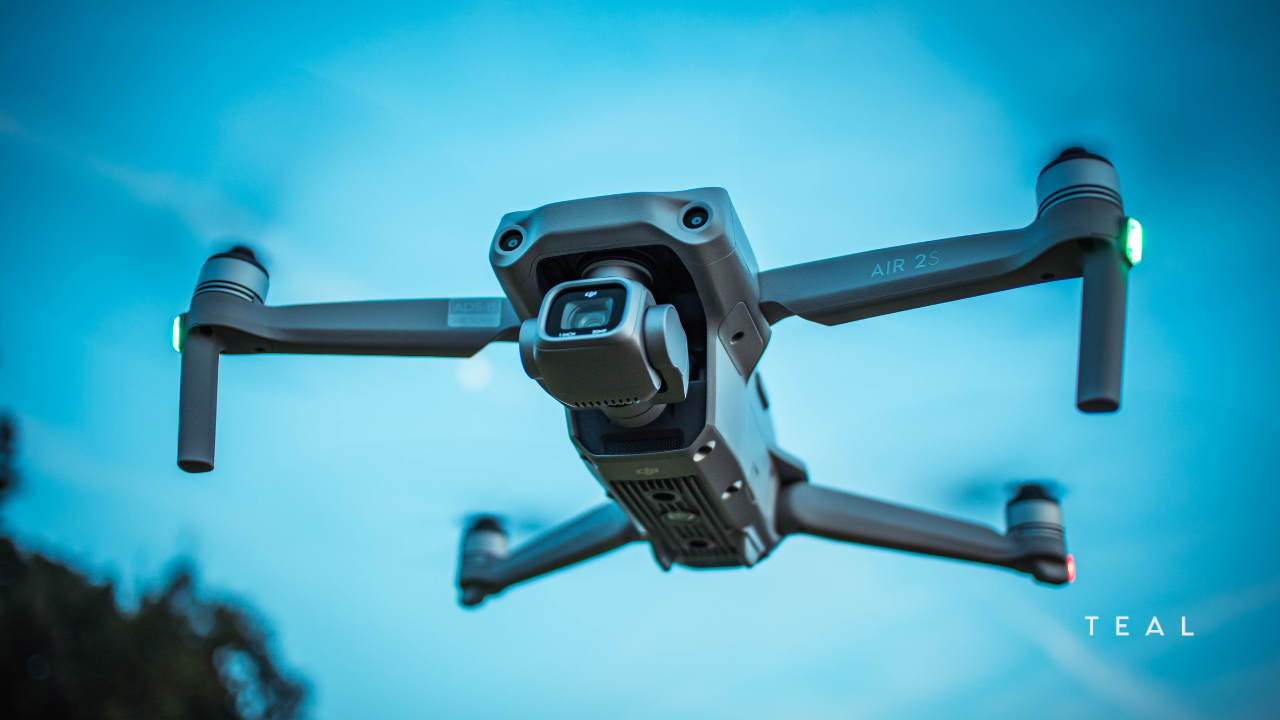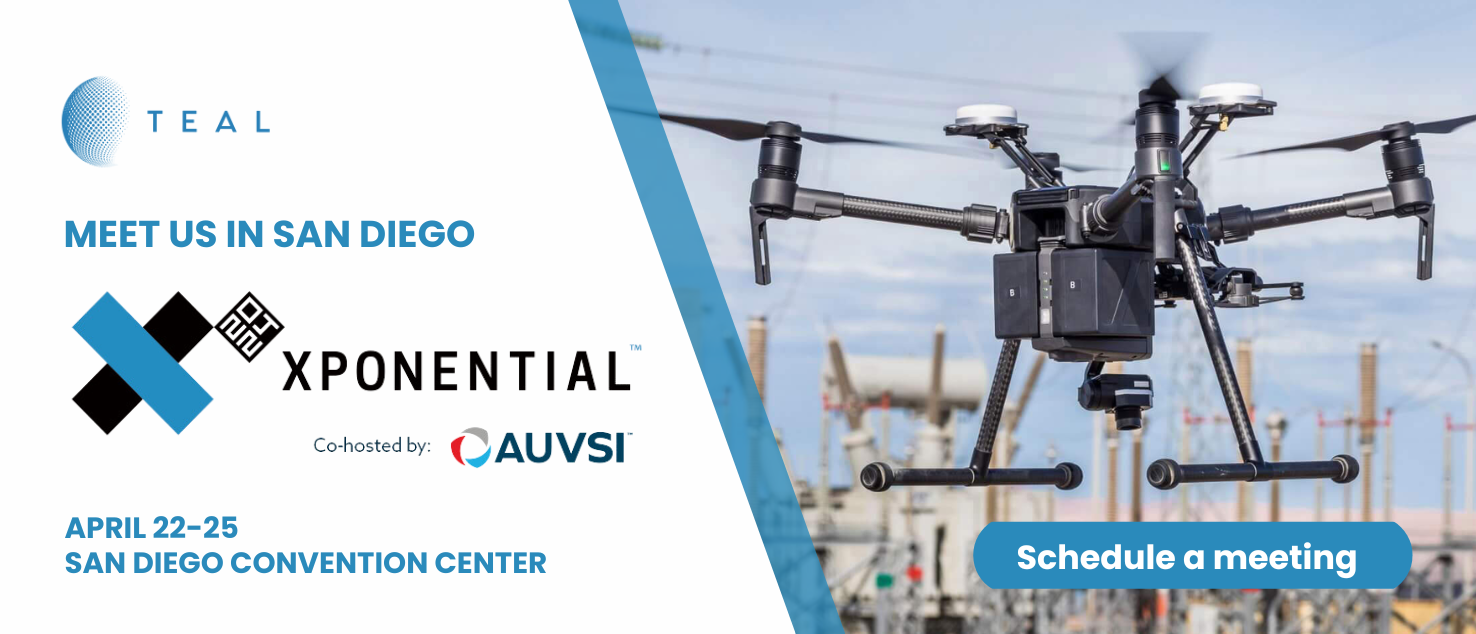Revolutionizing Global BVLOS Drone Operations with Advanced eSIM Technology

BVLOS Drone Operations: Rising to the Challenge
The drone sector is witnessing a pivotal shift, with eSIM technology emerging as a key driver in advancing the capabilities of Beyond Visual Line of Sight (BVLOS) drones, ushering in a new era for Unmanned Aerial Vehicles (UAVs). Thanks to reliable, global connectivity, drones can now venture further and accomplish more than was previously conceivable.
Elevating BVLOS Drones with eSIM Technology
Understanding eSIM technology’s role in enhancing BVLOS drone operations necessitates a grasp of what eSIMs are and their operational mechanisms. More than just a replacement for traditional SIM cards, eSIM is a revolutionary technology for global connectivity. eSIMs come in multiple form factors and are similar to a traditional SIM, as eSIMs can be a physical, insertable chip (2FF/3FF/4FF). However, unlike traditional SIMs, eSIMs can also be soldered onto the motherboard of a device (MFF2). Companies like, Teal offer both plastic eSIM cards (like your standard SIM form factor) and embedded eSIMs that are compatible with any IoT device. This means that users can connect their devices onto any carrier network without having to physically swap out their SIM cards; all they need is access to an available network and the activation process simple. This makes connecting devices directly onto the right networks easier than ever before.
Broadening the Horizons of BVLOS Drones
 The capacity of BVLOS drones to operate independently of the pilot’s line of sight positions them as ideal for diverse applications, ranging from agriculture and delivery to infrastructure monitoring and public safety (drone as a first responder).
The capacity of BVLOS drones to operate independently of the pilot’s line of sight positions them as ideal for diverse applications, ranging from agriculture and delivery to infrastructure monitoring and public safety (drone as a first responder).  BVLOS drones are integrating into everyday commercial operations and surveillance missions. But as drones move from novelty flights to mission-critical ventures, their connectivity struggles come into sharp focus. Traditional SIM cards offer limited global reach, often tying users to a single network. This can be problematic for drones operating around the world, especially when they are flying missions beyond an eight-mile radius.
BVLOS drones are integrating into everyday commercial operations and surveillance missions. But as drones move from novelty flights to mission-critical ventures, their connectivity struggles come into sharp focus. Traditional SIM cards offer limited global reach, often tying users to a single network. This can be problematic for drones operating around the world, especially when they are flying missions beyond an eight-mile radius.
Nevertheless, their utility was previously hindered by unreliable connectivity over long distances. Traditionally, drone companies needed to manage multiple connectivity vendors in the various countries where the operate, requiring them to physically swap out SIMs on each mission. The advent of eSIM technology revolutionizes this, affording BVLOS drones the ability to switch between carriers seamlessly, thus maintaining continuous service even in the most remote areas. This development significantly enhances the operational flexibility and global deployment capabilities of drones. Providers like Teal offer superior eSIM solutions that guarantee efficient, real-time network switching, ensuring drones enjoy uninterrupted global coverage.
The Crucial Role of Connectivity in Commercial UAV Operations
For BVLOS drones, uninterrupted connectivity is essential, underpinning the need for constant communication with ground operations, immediate data transmission, and the execution of real-time instructions. Connectivity disruptions can precipitate mission failures or result in accidents. Thanks to eSIM technology, UAVs now have access to consistent and reliable connectivity, empowering them to reach new heights and expand operational boundaries far beyond previous limitations, thereby improving both their utility and operational efficiency.
Why MVNO Solutions Aren’t Ideal for BVLOS Drone Operations
An MVNO is a network provider that rents airtime (radio network) from the MNOs but adds a virtual data network for the actual throughput. Connections to this network first go through an MNO tower, then an MVNO datacenter. Many MVNOs claim that they are connectivity platforms or that they provide a global SIM, but because they are renting their platform, it means that you’re stuck with a static, limited solution and any changes are reliant on a 3rd party. With Teal’s patented and wholly-owned eSIM platform, IoT companies can develop features and functionality without 3rd party reliance, which translates into faster go-to-market capabilities.
An MVNO still operates a virtual network. They still operate datacenters and provide a rough copy of the data architecture of the original MNO network. At first, they look easy to join and may even seem cost effective, but then they fall short when roaming agreements are suddenly blocked or when they experience higher latency due to reduced datacenter capacity.
MVNOs will assert that they offer carrier-switching, but the reality is that they only switch you between towers while datacenters remain the same. In many cases, the identity stays the same as well. Why is this bad for IoT companies? Mainly because MVNOs don’t offer redundancy and remain a single point of failure.
Drones that are connected onto away networks are not prioritized. This means that in some cases you may experience great performance, but in many other instances, performance will be degraded, and latency will be high. This unreliability in network speeds and availability is not ideal for most mission critical high-data applications such as video surveillance, fleet management (telematics) solutions, autonomous robotics and BVLOS drones. So, while it might seem like you are getting great global coverage at competitive rates, the reality is that your mission critical devices are put at risk and will likely experience less than advertised performance.
Contrarily, native core connectivity is purpose-built for BVLOS drons, ensuring consistent, high-quality service, and response, irrespective of location. The costs associated with core connectivity are also more predictable, given the absence of unexpected roaming charges, which can be detrimental to the financial health of a business. Overall, the return on investment with native core networks stands out due to the performance gains and the ability to maintain better control over connectivity infrastructure.
Charting the Future: BVLOS Drones and the Evolution of eSIM Technology
The incorporation of eSIM technology within the BVLOS drone sector marks a significant advancement, yet it heralds just the beginning of a broader transformation. As eSIM technology continues to evolve, it promises to unlock unprecedented possibilities for drone functionalities. The potential for BVLOS drones, aided by eSIM technology, spans complex applications such as long-distance deliveries, disaster response, and expansive agricultural projects. The future appears limitless, with eSIM technology not only augmenting the capabilities of BVLOS drones but also driving the entire UAV industry towards new frontiers of global connectivity and operational scope.

The Teal eSIM solution has revolutionized BVLOS drone operations by providing a single, programmable SIM card that tackles the industry’s core challenges:
- Global Connectivity Without the Headache: Managing multiple carrier agreements and roaming services has traditionally been an accounting labyrinth. TEAL eSIM simplifies it — one eSIM SKU, give your access to connect onto any network, anywhere in the world.
- Latency and Throughput: For BVLOS drones that require real-time, low-latency data transfer, Teal’s eSIM outperforms regular roaming services, ensuring a safer, more responsive unmanned flight experience. How? Because TEAL is the only connectivity solution that can provide native core connectivity onto leading networks worldwide without roaming. The result is higher reliability and better performance.
- Range and Redundancy: Drones that stretch beyond the line of sight can’t afford connectivity dead zones. TEAL enable dynamic switching between data networks allowing for redundancy across networks and guaranteeing the coverage and reliability that missions demand.
- Easy Deployment: Traditional SIMs have been a deployment bottleneck. With TEAL, the process is faster and more streamlined, allowing drone operators to get airborne with minimum fuss.
By adopting Teal’s eSIM, BVLOS operations have reported massive cost savings and unparalleled deployment efficiency, catapulting the technology to the forefront of this burgeoning industry. Learn more about how leading companies are leveraging TEAL’s eSIM capabilities for global BVLOS drone operations in this video:
Contact a TEAL expert today to find out how eSIM can help to streamline your global BVLOS drone operations here: https://tealcom.io/schedule-meeting
—-
📆 Mark your calendars! Join us at XPONENTIAL 2024 in San Diego on April 22nd – 25th.
We understand the pain points of BVLOS drone companies like yours – multiple contracts, vendor complexities, and the need for reliable global connectivity. Don’t miss your chance to discover how you can transform your connectivity with our simple, yet powerful eSIM solution.
Join us at XPONENTIAL 2024 and book a time to consult with a TEAL expert. We’ll demonstrate how our single eSIM SKU can ease your operational burdens by enabling your drones to easily connect onto any network, anywhere around the world.
Meet with TEAL at XPONENTIAL?
Recent Posts
CES 2026: The Connected Future, Through TEAL’s Lens
Teal Communications Staff2025-12-18T18:58:56+00:00
The Fastest Growing Company in the PNW isn’t an AI Startup… it’s TEAL
Teal Communications Staff2025-12-10T20:43:23+00:00
The Sky is the New Cell Tower: Satellites Are Reshaping the MNO Landscape
Teal Communications Staff2025-12-09T21:28:24+00:00





